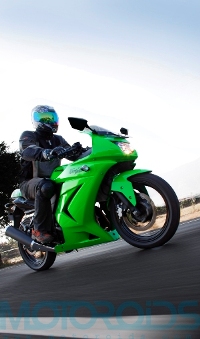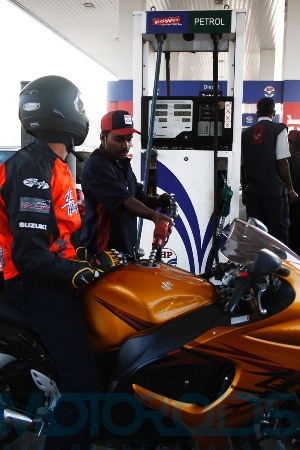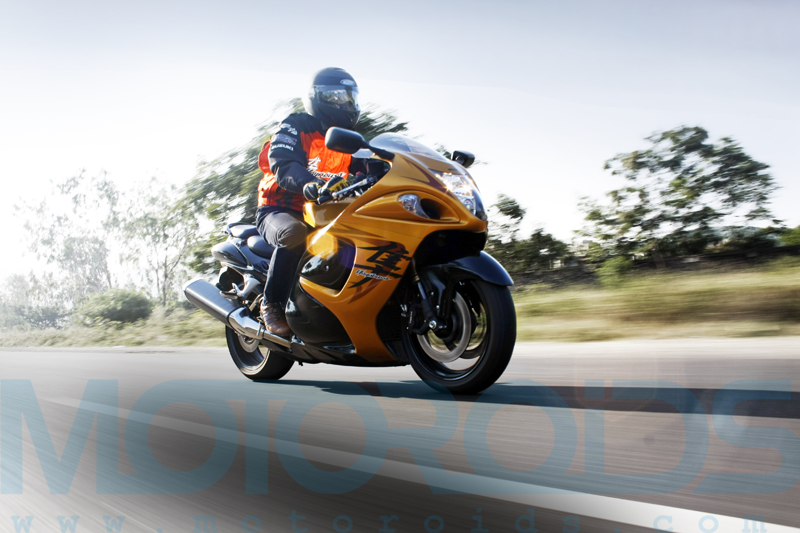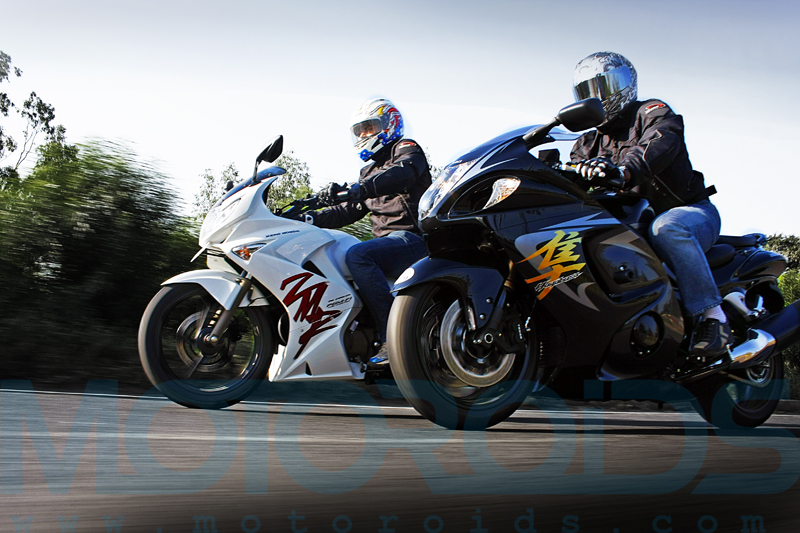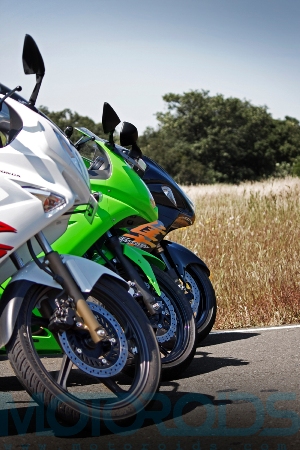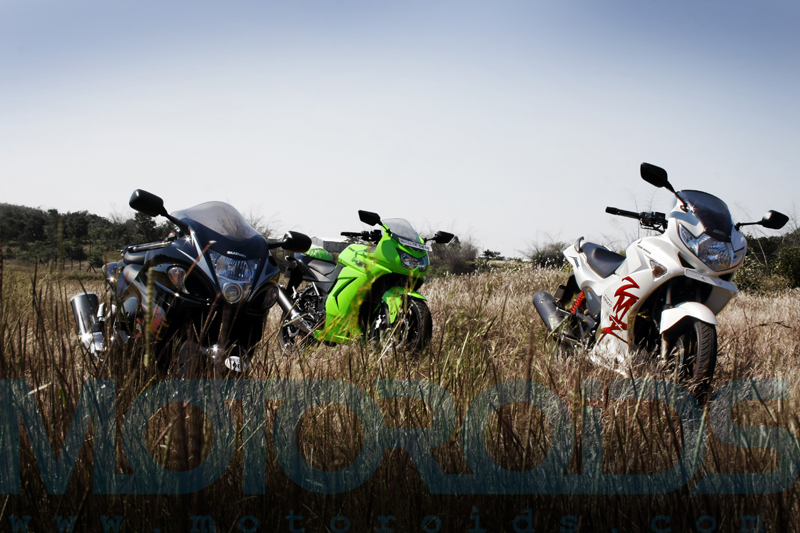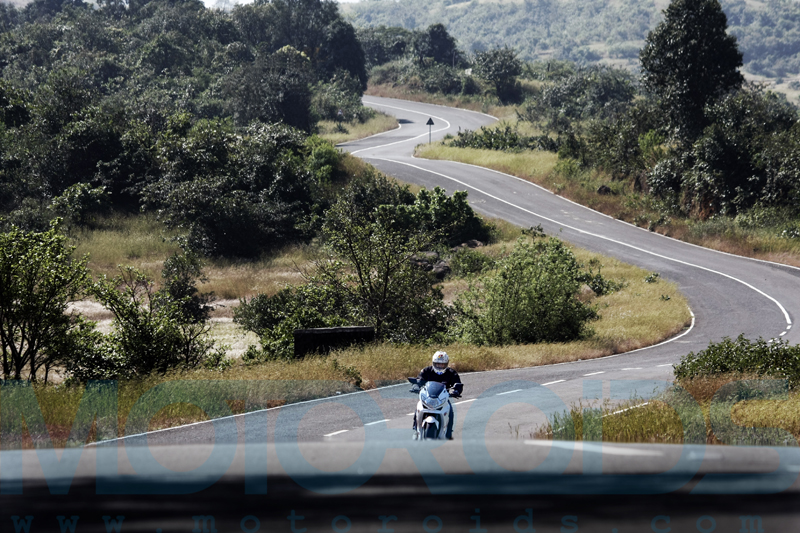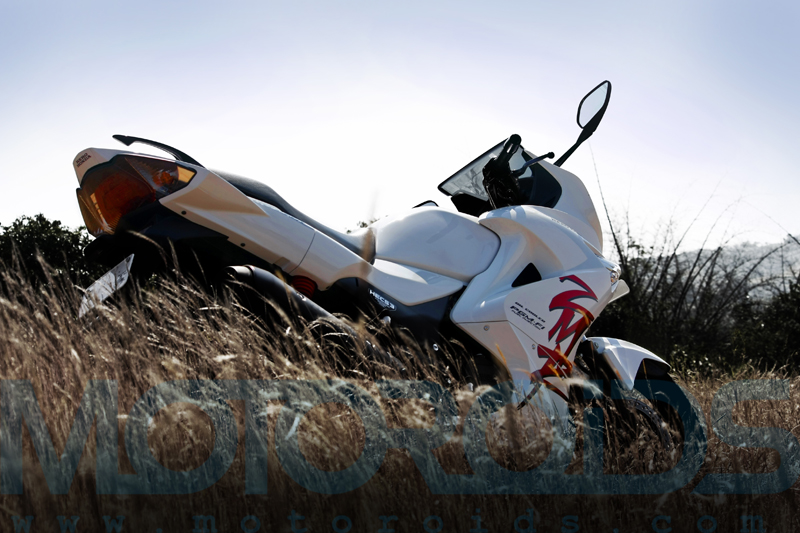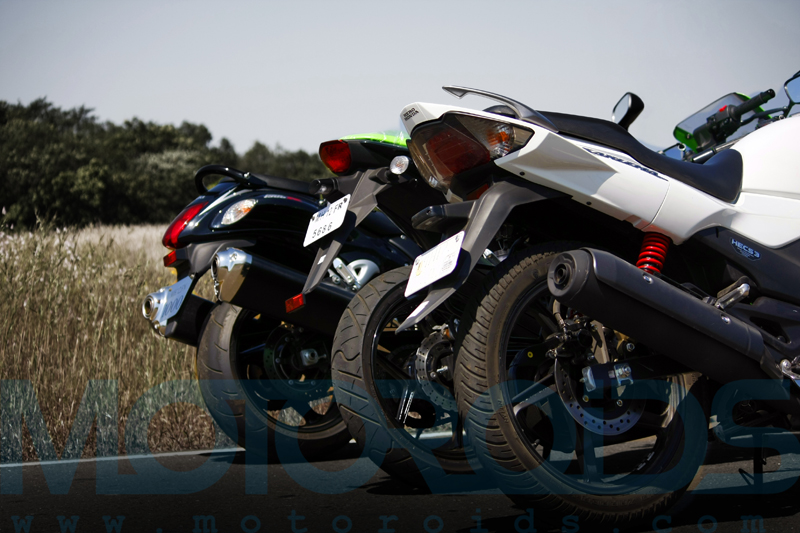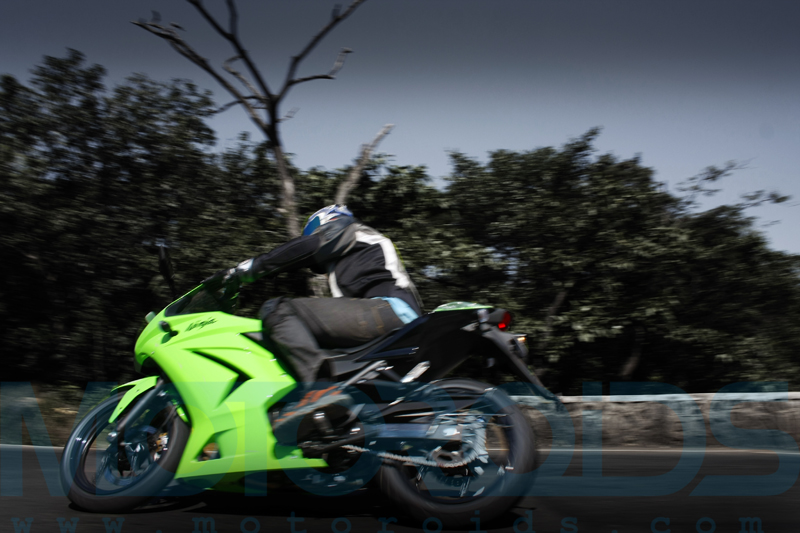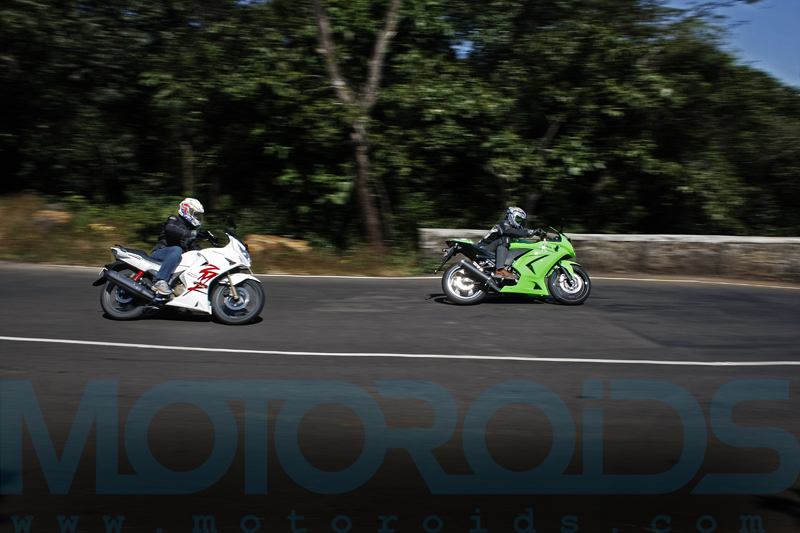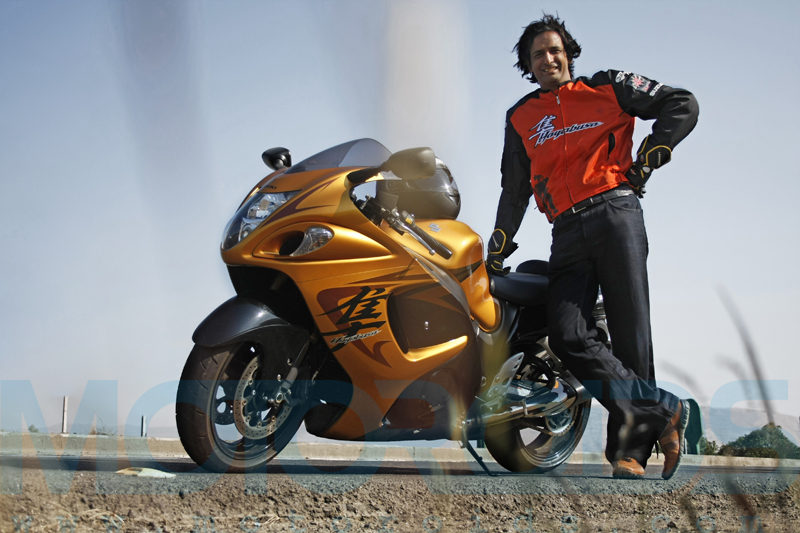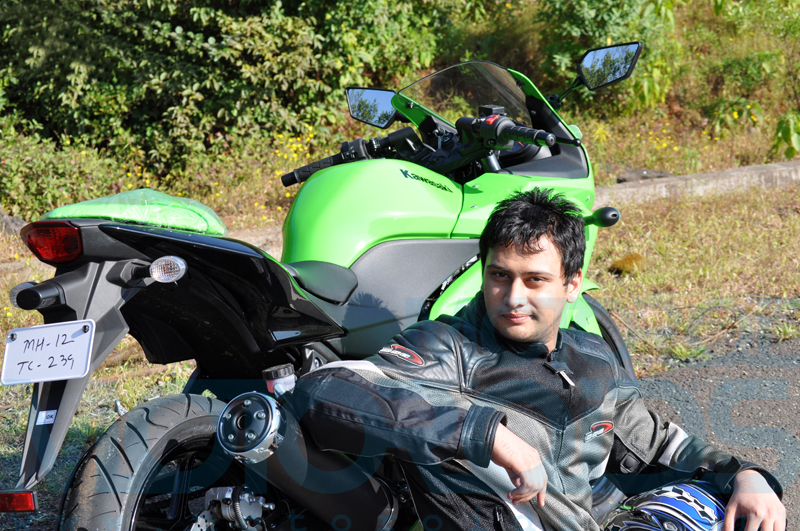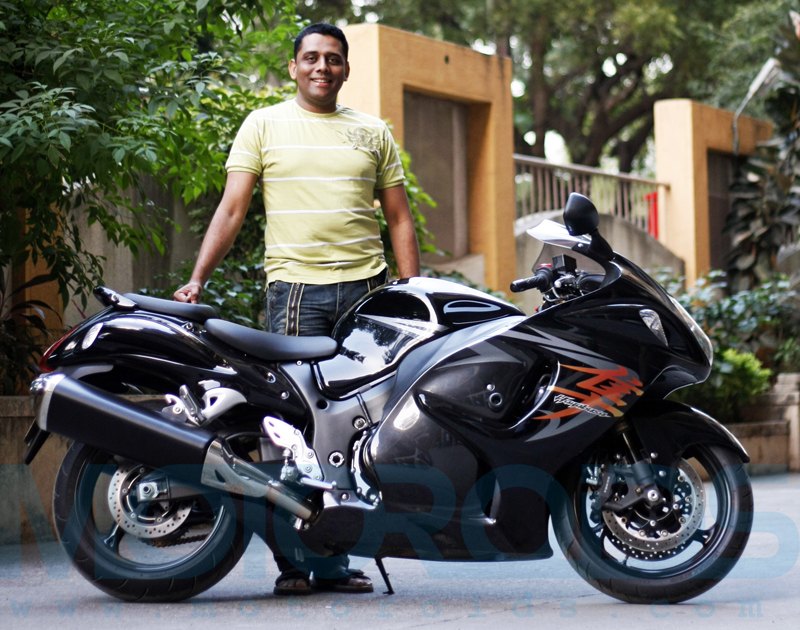So just how fast do these land-to-land missiles scale ground in the real world?
by Amit Chhangani
Even we know these bikes are from three totally different segments, so please hold your horses before troubling your eyebrows. Think of this feature as the first documented attempt to quantifiably assert the relative difference in the average speed of these bikes over a distance of 500km. At the end of this comparo, we would have evaluated what practical speeds these bikes can manage on a reasonably good Indian highway. While we’ll ride them primarily through smooth highways, we’ll also throw in some lunar craters, some hilly sections and some heavy traffic conditions to understand their practicality and speed in various environments better. The mission, for each one of these contraptions is to swallow and spit miles as quickly as they could without looking bloated or nauseous. The time they save in the process should ideally be proportional to their price tag, but just to make it fair, we’ll discuss the intangibles as well before concluding the debate. Hope me make a bit of sense now, so let’s proceed.
The Ninja packs in a lot of firepower. Given an open stretch (which unfortunately isn’t the case in India) it offers a substantial advantage over the ZMR
The Karizma has to be the first bike we start with. The exploits of its earlier iteration as regards touring, have been legendary to say the least. One crazy nut namely Arnob Gupta even rode it for 36 continuous hours to travel a distance of more than 2500km, and the bike didn’t sound any different from how it sounded when he started. The inclusion of clip-ons and the new seat are the most important incorporations on the ZMR to aid long distance riding. The upright handlebars and the rather hard seat of the previous version were not very conducive for the spines and bums of endurance enthusiasts. The new handlebars distribute slightly more weight onto your shoulders and wrists, and facilitate more comfort in the longer run.
The only limiting factor to the Busa’s blistering speed on the highway is its relatively low fuel efficiency and lesser range, which makes it stop more frequently on fuel pumps
The seat of the earlier ZMA needed to be modified by most seasoned long distance runners, but the new version is more butt-friendly with better, slightly softer cushioning. The vibes at the foot-pegs and the handlebars of the old ZMA were never a problem, and they aren’t in the new version either. In fact the FI has made the engine a tiny bit smoother, so basically you are now running a bike with better cushioned seat, lesser vibes and a better positioned handlebar. It also features FI, so you are more insulated to the variations in altitudes, but that shouldn’t matter much unless you’re travelling across huge geographies. The engine doesn’t have any more poke than the one on the ZMA R, so your top and average speeds won’t differ much. In the longer run, you’ll get slightly less fatigued though. Those tubeless tyres will make you less prone to punctures, and will be repaired in one fifth the time required to mend the tubed version.
The ZMR headlamps are a major improvement over the ones on its predecessor. The bike has a stronger beam and facilitates much better illumination in the dark. We really think the new headlight will make a significant difference in the average speed of the bike on badly lit two-lane roads during the night. The difference in average speeds can be as much as 20km/h for those who prefer night riding.
Not only is the Busa fast on straights, its as planted as a mountain
During the day, however there isn’t much to choose between the two machines. Both have identical engine characteristics and performance. The ZMR accelerates with great reassurance, making you aware of every unit of its plentiful toque as it surges ahead. The bike cruises happily at 115-118 km/h after which the engine becomes slightly gruff and shows some resistance before maxing out at 125km/h on the speedo. But those who tour long distance never push the engines of their bikes out of their pleasant zones. That sort of a treatment on well surfaced open highways with fairly disciplined traffic should result in average speeds of 95-100 km/h. Mind that we are calculating only the ‘on-saddle’ time here as the time consumed during breaks is going to remain constant for all three bikes.
The ZMR suffers with a lack of top speed, but bring in a good mix of sharp turns, rough roads and it claws back lost time. The ZMR also has the best range of the three bikes here
Then there is the ability to take the rough with the smooth. Any doubts about the ZMA’s abilities to deal with testing terrain should be laid to rest with the mere mention of one Ashish Maudgil. The lad has won Raid-de-Himalaya on his Karizma numerous times. The chassis and suspension of this HH can take any amount of bashing without making the slightest squeak. However, with the newly incorporated full fairing, the ability to tread the untrodden territory has been rather subdued. It’s not a particularly pleasing feeling when you hear the sound of stones flying off the front wheel and hitting the fairing of your bike. The underpinnings of the ZMR, however, have the stuff to skim over broken roads and make you feel like an MX champ in the process. So if a scratched / cracked fairing isn’t your concern, the ZMR is still very much the intrepid roamer of the wilderness that it always used to be. It can pretty much take almost any terrain in its stride, and fast.
The noses of the three bikes are uncannily similar
All in all, the Karizma is still pretty much ‘the’ tourer machine you need in India as long as you are riding on a good mix of road conditions which don’t allow you to go too fast. If, however, you are one of the luckier souls who travel mostly on well surfaced, wide sections, the equation changes drastically. The ZMR isn’t rapid enough on open highways and its top speed becomes a bit of an irritant when you know that you can make good time with some more speed. The newly introduced Ninja has a substantial advantage there. Not just the new Kwacker is supremely poised and at ease doing 135km/h, it has plenty in store at that point, were you really in a mood to grab it by the collar. The most amazing aspect of the bike is its incredible smoothness and muffled exhaust note even at the peak of its rev range. There are absolutely no vibes or noises emanating from the contraption even when it’s pushed to the limit. Given an open stretch, the Ninja will leave the ZMR behind by miles by virtue of its decidedly better acceleration and top speed.
The Ninja is an incredible easy and comfortable bike to ride too, and contrary to the R tag which hints at an extreme riding position, its very rider friendly and relaxed in terms of footpeg-seat-handlebar combination. The ultra smooth engine loves revving and runs delightfully without any resentment across the rev range. The step-seat isn’t the best option for a pillion rider, but the problem figures in only when you intend to carry one. In identical conditions, we managed an average speed of 105km/h on the Ninja over the ZMR’s 95. The difference, however will further broaden if the two bikes are pushed to the limit, as the Ninja is capable of doing some really serious top speeds.
The Ninja holds its own even in the company of the Busa. The ZMR looks slim, even disproportionate from certain angles
The Ninja’s engine is peakier in its character when compared with the ZMR. Rough roads require good low and mid range, nice clearance and light weight more than outright power. The ZMR scores over the Ninja in that aspect, and makes for a better option on rough terrain. We’re also not very satisfied with the Ninja’s headlight. The much cheaper Pulsar 220 which can arguably be termed as the bike from the same stable dons a much better headlamp. After paying a whopping price of Rs 300,000 you won’t relish the fact that a much cheaper bike zooms past you in the night, solely by virtue of its better illumination.
Unless you are in a mood to swallow miles at a mad pace, the ZMR makes for almost the perfect tourer for Indian conditions
The real deal, however, is the Busa. Give her an open stretch and she’ll make absolute mincemeat of the other two bikes. In fact, the Busa will massacre any other bike over a long haul. The globally acclaimed super tourer is unlike any other large capacity bike that you may have ever come across. While every other sportsbike tries to look as lean, mean and aesthetically appealing as possible, each and every body panel on the Busa is built for a purpose – to let the air slip around its surface and help it slither through with minimum resistance. So when you wring the throttle, your worry isn’t whether the bike can go fast enough, for it can do higher speeds than what you can handle – you need to worry more about your health and life.
The ZMR feels completely at home off the road
There are three performance modes to choose from, depending on whether you want to feel like a bullet, missile or arrow. In either case, you’re going to travel at a very, very fast pace. Specs in the horizon take no longer than the blink of an eye to turn into the posterior of a truck. All it takes to experience the NFS blur from as close as possible in real life is holding on with the twisted throttle for a few seconds. The world around you transforms when you look at it from the seat of the Busa, things happen at an unprecedentedly mad pace. No matter what one has to say, there isn’t a faster way to travel via road than the Busa.
The design of the front fairing is such that the wind resistance is reduced to the absolute minimum levels and ducking down slightly means that you dodge all that air that’s such a big irritant while riding fast on any other superbike. The soft, wide seat is supremely comfortable. The riding position is still a bit too extreme for the liking and comfort of Indian riders, so you need to ride the crazy falcon for a couple of days before you could set out without running the risk of having to give up mid-way owing to aching wrists and worn-out shoulders. Having said that, the Busa is still by far the most comfortable high-performance bike that you would come across in the country.
Ninja’s tail lamp looks puny when compared with that of the other two
On good four-lane open highways, average speeds of more than 125km/h are manageable without having to hang your pair of family jewels off the saddle too much. While that may not sound very impressive for the incredible capabilities of the Busa, seasoned tourers would know how high an average speed that is. The Hayabusa is unquestionably the fastest machine you can buy on the planet to travel long distances fast via road. The only Achilles heel of the machine is its heavy weight, enormous front fairing and thus the inability to take rough, broken roads in its stride with confidence. Also, it’s not a very convenient bike to handle around sharp hairpins owing to its enormous length and girth. But if it’s a freeway flight you’re looking at, there isn’t a better option than this Japanese contraption.
The Ninja has just the right amount of power and handles sweetly. It’s a delightful bike to ride around twisties
So let’s quantify things. Our test over a reasonably smooth four-lane highway yielded average speeds of 95km/h, 105km/h and 125km/h for the three bikes in increasing order of cubic capacity. While we agree that the attainable average speed may vary depending on the skill of the rider and his willingness to risk his life, the speeds indicated above are representative of what a reasonably skillful rider should be able to achieve. Throughout our tests, we made it a point to never take the engines of the respective bikes to their limit, and made sure that we were a good distance away from speeds which looked hazardous for that situation.
The ZMR is no match for the Ninja around corners
Based on the above deductions, if we try an calculate the time taken by each bike to cover a distance of 500km, (if ridden non-stop, as the time spent off the bike will remain constant) the ZMR, the Ninja and the Busa will roughly take 5 hours 20 minutes, 4 hours 45 minutes and 4 hours respectively. The notable things here is that while the ZMR and the Ninja are running at about eighty to ninety percent of their peak capacity to achieve those speeds and times, the Busa is hardly running at fifty percent of its potential. Which means that given an empty straight road, the ZMR and Ninja may not be able to post much improvement over their real-world times, but the Busa will cut down its time almost by half.
A 35 minutes advantage over a 500 km run is what you get with the Ninja over the ZMR. If you ride safely and sensibly that is. Whether you think the saved time is worth the extra two lakh rupees depends entirely on the depth of your pockets. The Busa, however, we think is worth every penny you spend on it. On the right road, and under an able rider, this crotch rocket is capable of disposing the aforementioned distance more quickly than a Bullet Train. The falcon is the fastest thing you can rest your bum on with those 14lakh rupees. Go on, indulge! Every penny would be well spent…
HEARTFELT THANKS…
Neeraj Walia – a succesful businessman and a geltleman biker. Rode all the way down from Mumbai to help us with the shoot
Mithilesh Panchal – owns a 220 as well. Been busy knee-scrapping ever since he got the Ninja
Sujat Nair – dentist by profession, and a thoroughbread biker at heart, Sujat is gearing up for a Saddlesore attempt

